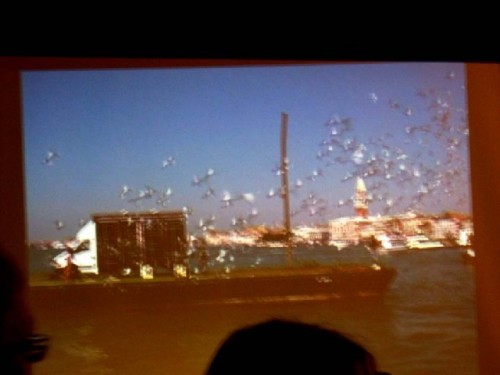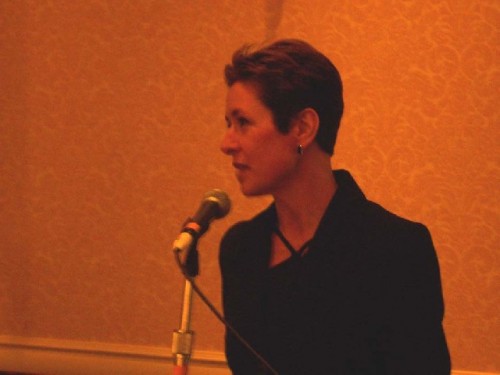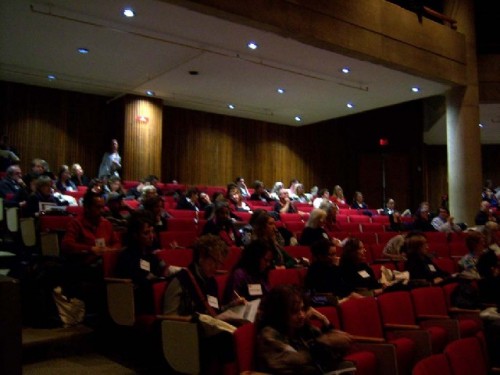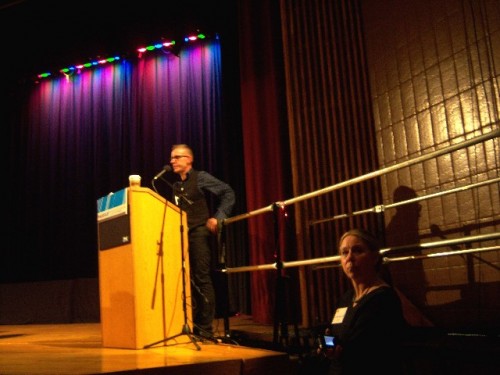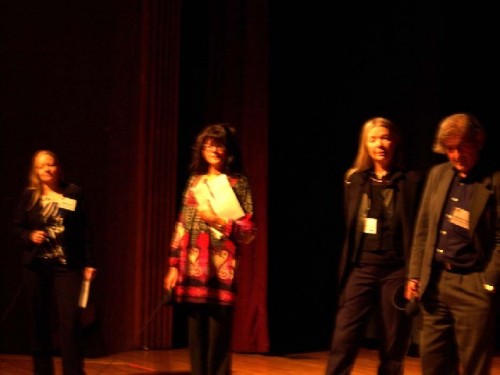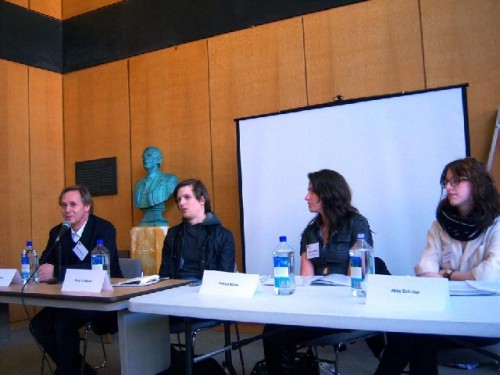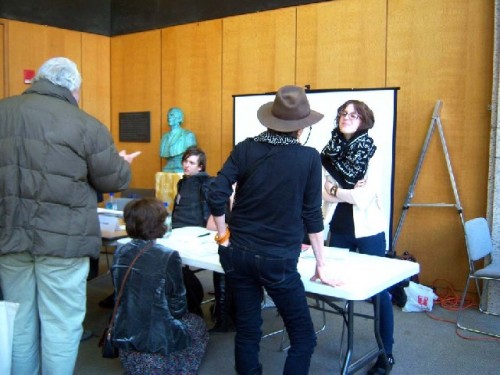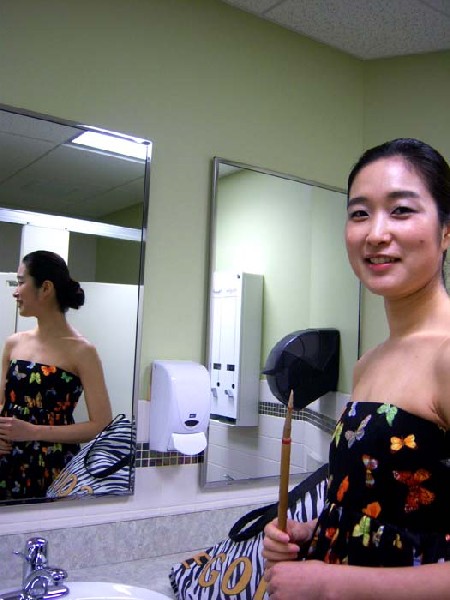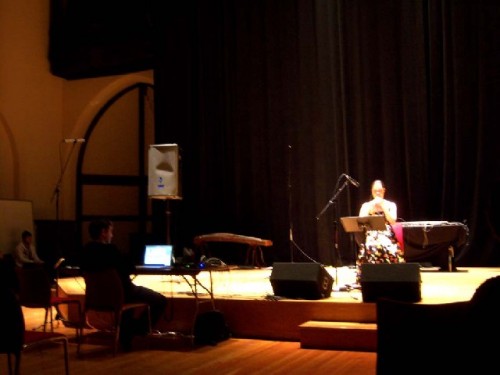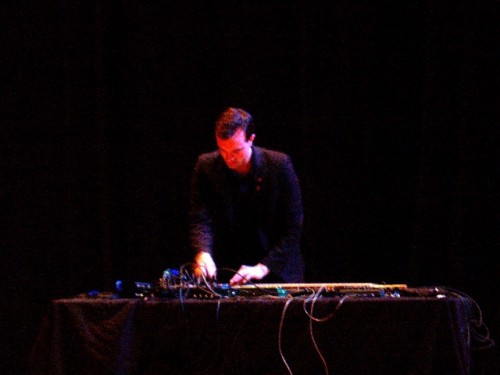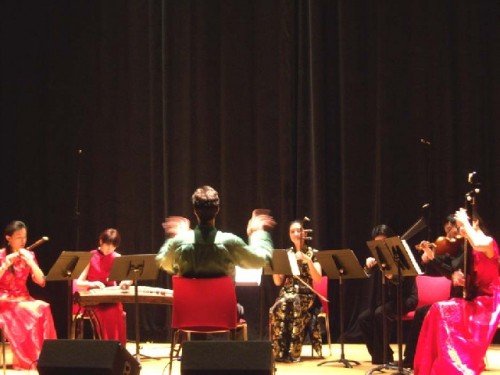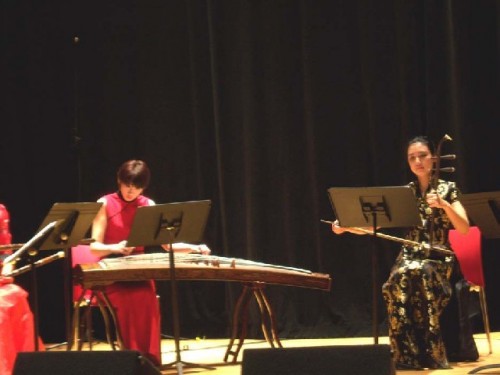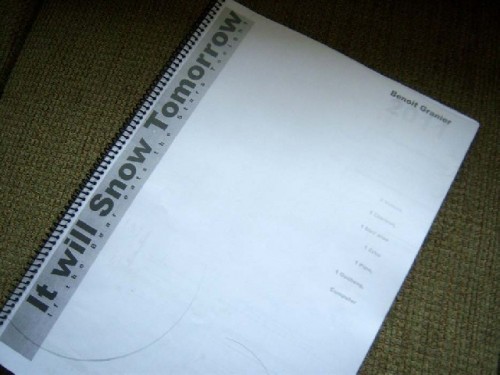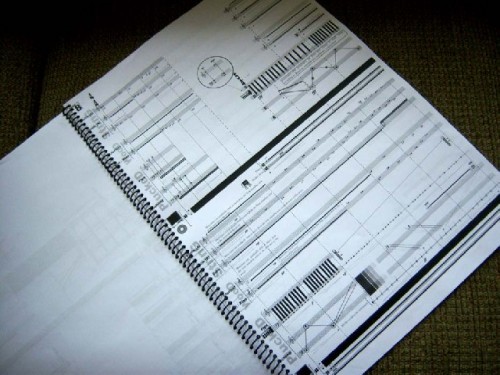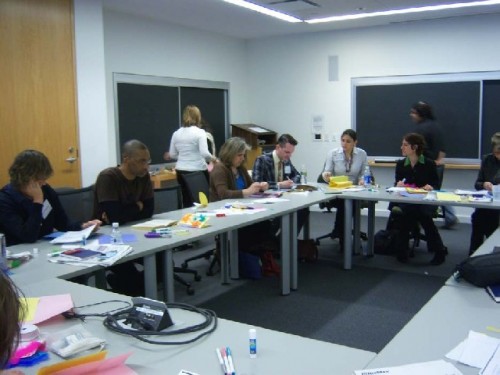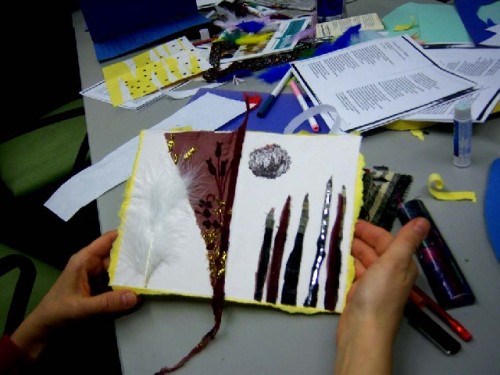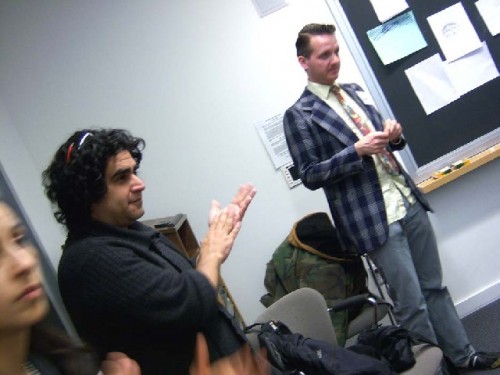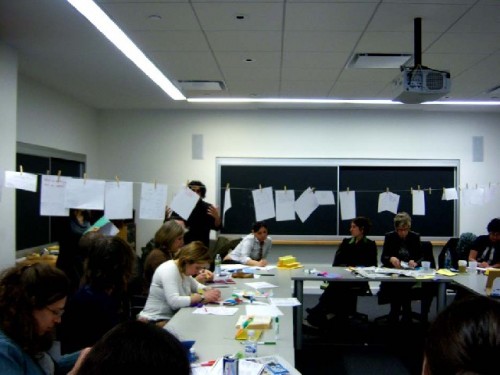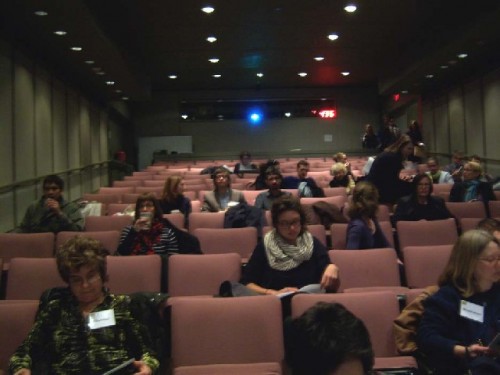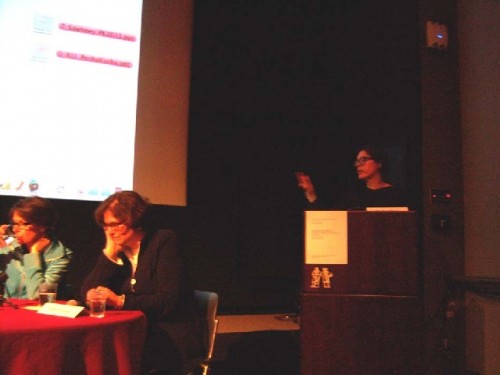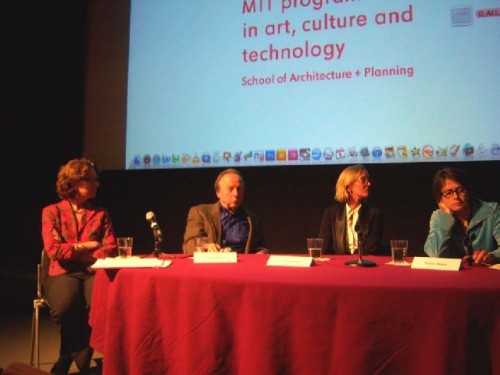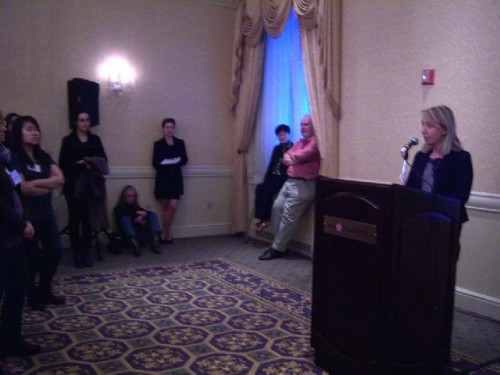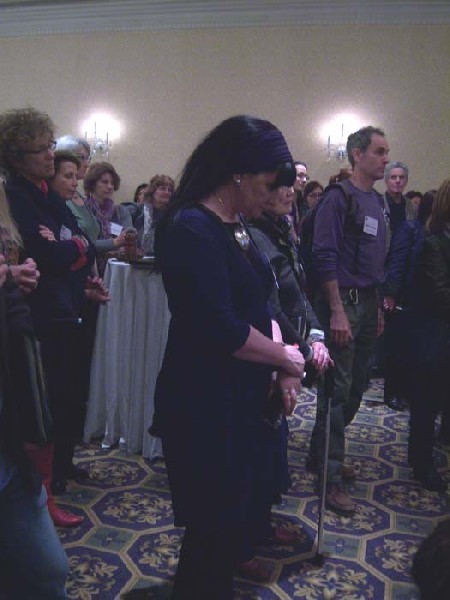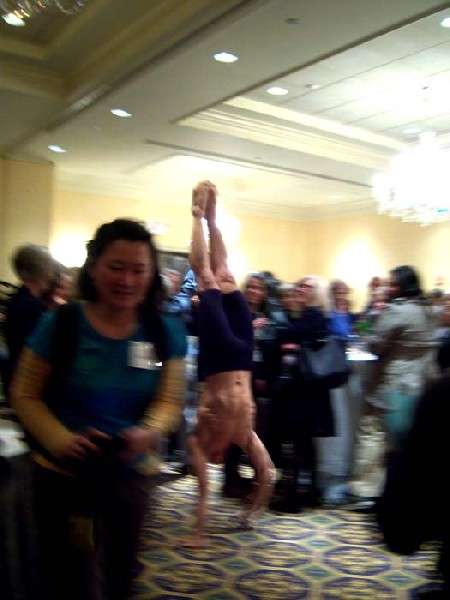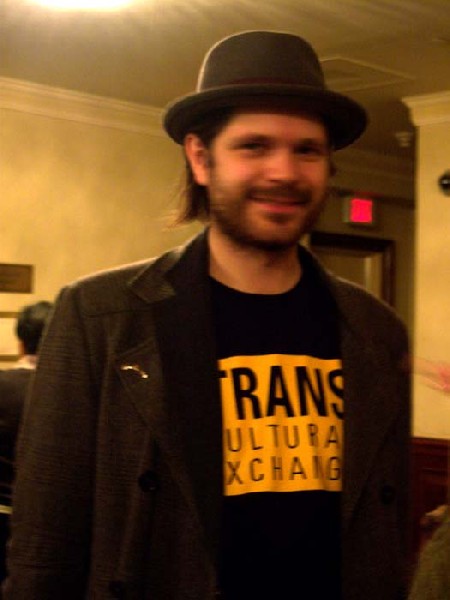Wrap Up TransCultural Exchange Conference 2011
International Opportunities in the Arts - Part One
By: Astrid Hiemer - Apr 29, 2011
The 2011 Conference on International Opportunities in the Arts, The Interconnected World, was the third of its kind. It was presented by Mary Sherman, director of TransCultural Exchange, in Boston, Massachusetts, April 7 – 10, 2011.
This conference was generally applauded as the best yet ! A couple of descending voices later admitted that they may have attended the wrong panels or programs, and that was indeed a dilemma. During four chock-full days, schedules in 6 major locations, it was sometimes difficult to gauge in advance, what best to select.
We offer here in detail our own choices and observations and, of course, information gathered during the conference:
Thursday, April 7: The first panel presentations on the Massachusetts College of Art and Design campus were given by four representatives under the title of National Residencies: Regional Aspirations. Maiken Derno, who directs the Culture and Information Department at the Danish Consulate General in New York City introduced Denmark as the ‘Land of Opportunities for Artists.’
International cultural exchanges are offered as: 1. Long-term collaborations, artist driven projects; 2. Long-term, flexible and proactive projects, where exhibitions are not necessarily the final outcome; 3.Knowledge sharing, education and debate, diverse cooperation between Danish and international artists. Of 42 projects, which began in 2008, many are still in progress.4. Research programs, which allow administrators and art journalists/critics to visit Denmark; and 5. The DIVA program invites international artists to residencies in Denmark. This small country spends yearly approximately $ 2 Million on programs, they can easily be researched and appear to be accessible to a large number of applicants.
Hanneke Fruehauf is the curator at Bridge Guard in Zurich and can be reached via dutchartdesk.ch, a foundation to foster better understanding through art and cultural projects. She particularly spoke about artists-in-residence.ch, an organization in Switzerland, which has been in existence since 1999. It promotes more than 100 residencies. Most are placed in various parts of Switzerland, the rest are abroad. Institutions, research centers, and companies support the venues.
Francine Royer, a representative of the Conseil des arts du Quebec, based in Montreal, Canada, introduced many parts of the Governmental Council’s programs: A network of studio apartments are reserved for 30 artists and writers to work independently and long-term in Quebec. In order to facilitate exchanges of artistic or literary viewpoints and establish durable ties between Quebec and foreign artists, the Council has established studios in New York, Paris, Rome, Berlin, Tokyo, London, Buenos Aires, Mexico City and more. Further, there are exchanges with several Nations and UNESCO supported artists as well as with Canadian States. In other words, Canada’s efforts for international exchanges and good-will are generous !
The Australian representative Nicholas Tsoutas from the College of the Arts at the University of Sydney spoke about three residencies: 1. The Artspace Studio Residency Program, which are subsidized studio facilities and a recent Open Studio Program in Western Sydney in the former Olympic Center. 2. Parramatta Artists Studios support indigenous art exploration for artists in Western Sydney; and 3. The Bundanon Trust, a program that has hosted choreographers, dancers, writers, performers and visual artists in remote Australia. He called it 'the tyranny of distance' but also, in the quiet location work can really happen.
Further he warned and questioned: ‘Since it is not difficult to attend residencies world- wide any longer and government sponsorships are extensive, is the artist being co-opted? Are residencies being institutionalized? Is the utopian artist approach of residencies being complicit to present government policies?’ Indeed, food for thought right at the beginning of the conference !
The afternoon program at Mass. College of Art included ‘Art in Public Spaces’ and ‘How to Start a Residency Program.’ Northeastern University hosted: ’Digital Portfolios for Artists,’ ‘The Collision of Art and New Technologies: Creativity, Entrepreneurship and Technology’ and ’The Siemens Art Program.’
There were several options at The Boston Public Library, featuring writers, book readings, and sessions to encourage publishing. Mira Bartok read from her recent publication, ‘Memory Palace,’ which chronicles an exceptional mother-daughter relationship. ‘Mira’s List’ is Bartok’s excellent blog, where she continually updates many resources for here and abroad.
We chose to attend ‘What a New Generation of Young Art Critics Thinks,’ which was moderated by Marek Bartelik, who has been publishing articles in Art Forum for twenty years and is the president of AICA-USA (National Chapter of International Art Critics). Representatives of the New Generation were Greg Lindquist, Patricia Milder and Abbe Schribe, still in their 20s and 30s. All support themselves by other jobs, but are dedicated writers and critics, smart, eloquent, thoughtful and from New York City! The Brooklyn Rail and artcritical.com, among others, are two publications on their radar screens as writers or editors. Blogs they follow are: Tyler Green: Modern Art Notes and Art 21 / PBS.
Patricia Milder spoke about the excitement of finding and following a new group or artists who have not been written about. She is particularly interested in dance and performance. That impressed me !
First Thursdays of the month are dedicated to open galleries at Harrison Avenue in the South End; the Institute of Contemporary Art has Thursday evenings open with free admission; and the Museum of Fine Arts charged $ 20 per ticket. It would make good sense, that a major art conference in Boston receives a price reduction from the MFA for their attendees. Hundreds of art professionals from around the world would have given glowing reports about the New MFA and its programming to their colleagues, universities and organizations. - The current blockbuster show of Dale Chihuly glass works will become a glittering success.
We, however, experienced a magnificent evening of modern music at the Fenway Center, in a transformed church at Northeastern University. Anthony Paul De Ritis brought together performers for ‘World Music, the Next Generation.’ All are widely traveled with world-class engagements: Xenia Hanusiak sang the ‘Incantation Echo 11,’ by Constantine Koukias. De Ritis had two of his compositions performed. One was ‘Five Movements for Piri and 4-Channel Audio,’ with Hyo Sun Kang, who played the piri, a tiny ancient flute. Yannick Franck, a sound and visual artist presented computer improvisations of his piece ‘Viramundo.’
Dimitrius Spaneas rewrote his composition, ‘Gymnopedia,’ to be played by ancient Asian instruments for the TIMI Ensemble and performed it with them playing the clarinet. Timi MME (Modern Music Ensemble) is the only professional ensemble of its kind in Beijing. They are currently touring in the US. Benoit Granier, a French composer, as the director of TIMI, presented with seven musicians: ‘It will Snow Tomorrow - if the Bear eats the Stars Tonight.’ Clarinet, violin, and computer are known instruments in western contemporary music. The exquisite musicians of the ensemble also played a dizi/xiao, erhu, pipa, and guzheng, all ancient Asian instruments. Granier’s score resembles a graphic layout. Please take a look !
Friday morning sessions included ‘Finding the Best Fit: Researching and Applying for Artist-in-Residence Programs’ and ‘Engaging Public Officials.’ I chose to attend the Paper Picker Press Workshop (PPP), at Harvard University: Cultural Agents - Arts in Civic Engagements.
The two hour session allowed for a glimpse of the teaching and activities of a normally one week long workshop. Teachers and artists are trained to employ any number of available means to engage and inspire students or groups to a higher reading comprehension of texts or poems, which would otherwise remain alien. Words are also used to inspire other cultural and artistic expressions, such as re-writing the given text, a theatrical performance, song/music, photography, dance or play and any locally specific activities. Jose Luis Falconi led the workshop and encouraged the forty or more participants to respond artistically to the poem: A Disused Shed in Co. Wexford – Let them not forget us, the weak souls among the asphodels – Seferis, Mythistorema.
The group’s main exercise was to reuse material for book making and quickly, some colorful and delightful book covers were produced around the tables. Falconi and staff asked further questions about the poem’s content, in order to penetrate or individually own its meaning, and suggested group interactions and expressions. What an inspiring workshop!
Of course, Cultural Agents are there to attain their goals, often working with culturally and economically deprived communities nationally and internationally. PPP maintains several other locations. Harvard University students can participate in courses and forum series or attend the Puerto Rico Winter Institute. The Program has held conferences here and abroad and is inviting further inquiries and investigations.
By 'T' from Harvard Square to Kendall Square in Cambridge, MIT’s Bartos Theatre is only two subway stops away. I ventured to hear ‘Residencies as Research Clusters,’ which was sponsored by Art, Culture and Technology Program. Its director, Ute Meta Bauer, introduced Judith Vichniac, Associate Dean at the Radcliffe Institute Fellowship Program, then Taylor Davis, who is currently an Institute Fellow.
The program, which was formerly known as the Bunting Institute, may very well receive 850 applications yearly for 45 places and the (well) paid Fellows are required to be in residence at the Institute during an academic year. Radcliffe looks for outstanding proposals with artistic and academic research and pairing. One example: collaboration between a dancer and biophysicist, who are working on dance and flight and are preparing for their second seminar.
Davis, a sculptor, and professor at Massachusetts College of Art, is currently finding ‘entirely new ways of researching and thinking,’ as she put it in her straight forward manner. And, ‘the space between the boardroom of a company and the lumber yard is infinite.’ So, we (and she) wonder about the final shape of her project. Initially she felt quite intimidated in this highly academic environment but has adjusted to receiving great assistance for her research, which leads to exciting new possibilities.
Pamela Tate is the Director of the Center for the Arts, at Wesleyan University in Connecticut. The university made a commitment for the Arts in 1973 and has established thirteen new buildings in the interim, so that the entire campus falls under the banner of ‘The Creative Campus Movement’ and ‘Cross-Cultural Integration.’ 2700 students, faculty, scientists and artists benefit from the close proximity of academic and research facilities and teaching. Wesleyan is famous for its Ethnomusicology and Music Studies Program, which accepts PhD candidates.
Laura Harrison, a filmmaker, spoke about the Bogliasco Foundation in Italy. Since its inception, fifteen years ago, 650 Fellows from 35 countries have lived there during one month long residencies. Invited are ‘artists and scholars, who have distinguished themselves in the world,’ to continue their work and exchange ideas during evening discussions in a most gracious and beautiful environment. Eight to ten Fellows attend each period and the foundation may receive up to 400 applications yearly.
Lajos Heder and Mags Harries of the Public Art Collaborative in Boston were former Bogliasco Fellows. He spoke fondly about his experience at the Foundation and presented images of his work there. He also introduced a program in a remote setting of Iceland, where there were only five studios. He worked with simple and available materials, made drawings, photographs and used found objects. An exhibition marked the conclusion of the retreat, where 75 people came to the opening, from seemingly nowhere. Heder juxtaposed that experience with his time at the Bogliasco Foundation, a sophisticated, beautiful and highly organized experience, where one is never alone, unless working in the studio.
Other Friday sessions included ‘Electronic Musicians/Composers Survival Kit,’ at the Boston Center for the Arts; ‘The Growing Popularity of Low-Residency MFA Programs and the Needs They Serve;’ and ‘The Lawyer is In: Understanding Copyright and Trademark Law.’ The latter was reported as well presented and extremely informative.
Again, the conference’s primary location, the Omni Parker House Hotel in downtown Boston, lend its facilities to exhibitions, work sessions and panel presentations. We also celebrated with two receptions and dinners. More than one hundred presenters arrived from around the world and in total there were 500 plus people gathering information and making new connections and friends in Boston. Friday evening started with a festive Opening Night Reception, until a false fire alarm ended the party.
This concludes the first two days of the four day long conference. Please read the second article as well, full of valuable information; it will follow shortly.
Part Two

